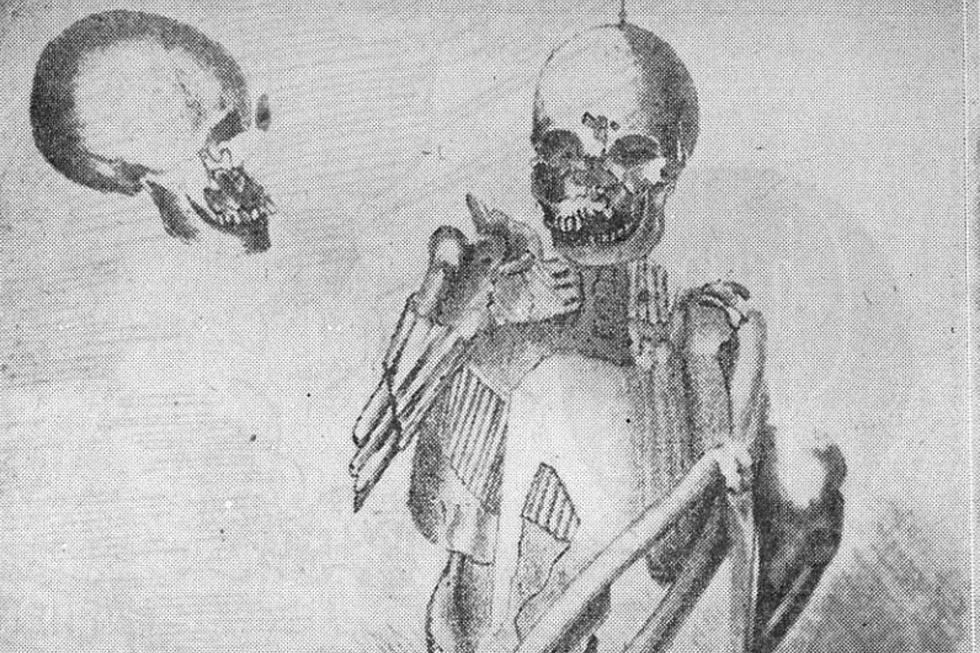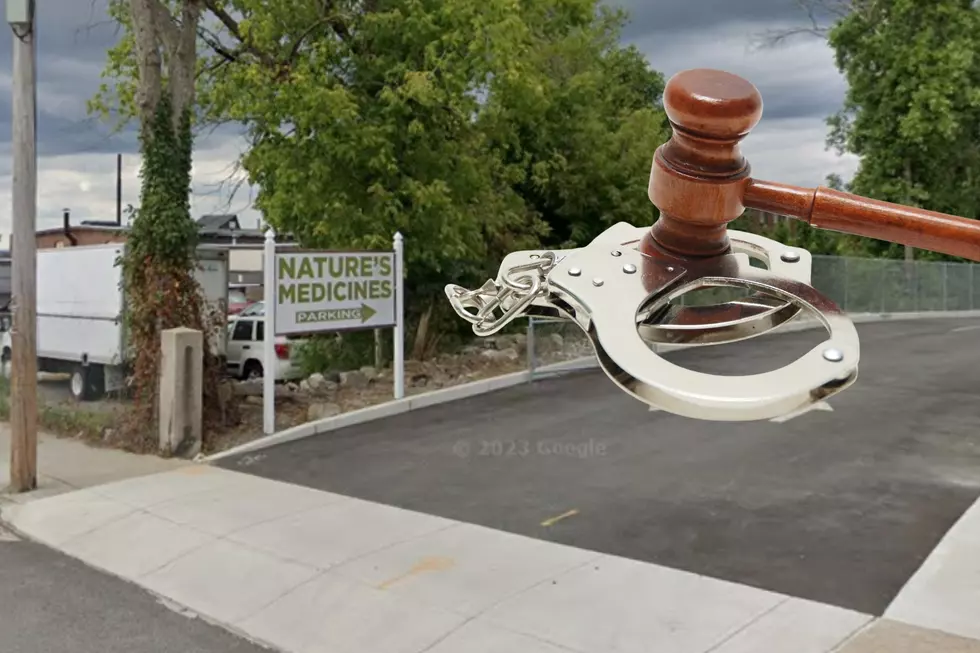
Fall River’s Skeleton in Armor Remains Shrouded in Mystery
A strange discovery was unearthed in Fall River nearly 200 years ago and remains a complete mystery today.
One morning in May of 1831, Hannah Borden Cook (future great-aunt of alleged murderer Lizzie Borden) was near Fifth and Hartwell streets grabbing a bucket of sand to scour her knives when she uncovered a skull.
She brought back searchers who eventually dug up the skeletal remains of an adult male clad in ancient armor and one of the city's most intriguing mysteries began.
But the bones' potential to answer questions about New England's past was short-lived.
This skeleton was unlike anything that had been discovered at the time. He had been found in a sitting position (which in and of itself was odd) and he was buried in a crude grave.
The body was also covered in coarse, dark bark that, once removed, revealed a brass breastplate and belt of brass tubes strung together for protection. Next to the remains was a quiver of arrows, though those disintegrated in the air. That alone gave searchers an idea of how old these remains were, since iron arrowheads can take between 200 to 500 years to completely break down.
For America, the difference between 200 and 500 years at the time was a big one and it meant that the skeleton probably pre-dated the Pilgrims' arrival in Plymouth and was potentially buried before Columbus even "discovered" the Americas.
A big deal for sure.
The remains were then brought to the Fall River Athenaeum where scientists of the time studied them and wrote about them at length. They most famously drew the attention of poet Henry Wadsworth Longfellow, who believed they were those of "old northern sea rovers who came to this country in the 10th century."
That belief was popular at the time and the skeleton was soon connected to both the strange writing on Dighton Rock and the Newport Tower, thought to have been built by Vikings. Longfellow's poem, The Skeleton in Armor, created a whole narrative to that effect.
Sadly, dating this skeleton with any accuracy was something that never happened. The Fall River Athenaeum was one of the many buildings burned to the ground when two young boys playing with a cannon started the Great Fire of 1843. The skeleton was completely lost, leaving behind only two brass tubes, currently housed at Fall River Historical Society.
Years later, a plaque commemorating the spot where the Skeleton in Armor was found and the woman who found it was placed at the burial site.
Though some still believe the skeleton has Viking or Egyptian roots, most scientists feel it was simply a Native American chief buried in his finery.
Because so little was left after the fire, the truth may never be known.
See Inside the Lizzie Borden House, Where Another Mysterious Fall River Event Took Place
Historic Haunted Places in Massachusetts and Rhode Island You Can Visit for Little to No Money
More From WFHN-FM/FUN 107

![Fall River Dog Is the Ultimate Adventure Buddy [WET NOSE WEDNESDAY]](http://townsquare.media/site/519/files/2024/04/attachment-Untitled-design-2024-04-24T063451.295.jpg?w=980&q=75)







